A room thermostat for a boiler is a device that controls heating depending on the temperature in the room, and not on the temperature of the object being heated (such as floor thermostats). Programmable thermostat - allows you to set the temperature in the house depending on the time of day, day of the week. Wireless is when you don’t need to run wires from the basement, where the boiler is most often installed, into the living room.
So why save? But because most boilers only have a knob for regulating the coolant temperature. That's all. Those. By setting the temperature of the coolant in the heating system, for example, 50°C, we get a room temperature of 24°C (selected empirically), and even then, depending on what the temperature is outside. And if it gets warmer and the house stops cooling, you will have to run to the basement and turn down the power because... an extra degree in the room is not comfortable and, most importantly, expensive. And vice versa - it gets cold outside, the walls cool down faster, run to the basement again, “add a degree.” With all this, the boiler operates in a constant on/off mode (which is not entirely good), maintaining the temperature of the coolant (not in the room), and it does this often, since the coolant in the system cools much faster than the air in the room.
In autumn/spring, when the weather can change dramatically during the week, heating the room by an extra 1°C leads to unnecessary waste of gas (I got 1°C ~ 1 hour of operation at full power, which is 2.7 cubic meters of gas). The room thermostat, when the set temperature in the room is reached, stops heating completely and waits for it to drop (by 0.5°C), and then turns it on again. In this case, the maximum efficiency of the boiler is possible only at maximum power. Those. the higher the temperature in the pipes, the more return we get from each paid cubic meter of gas. Here.
Why not Wi-Fi? Yes, I was thinking about buying Nest, Honeywell, and the same Salus i500. But there is one small feature. They only need Wi-Fi there so that the thermostat can connect to the Internet and “log in” to the manufacturer’s server, on which the user, through a “web interface” or “mobile” application, will set parameters and observe beautiful graphs of saving money. I didn’t find one that could be controlled by connecting directly via IP address (as I do, for example, with a satellite receiver, TV, router, NAS and my wife). Give everyone the Internet. What if the bourgeoisie disconnects us from their Internet, and if a drunk tractor driver breaks the telephone cable, and if he forgot to “put in” the money, and if hackers “take down” the server or hack my account and “fry” it for my money. There are too many “ifs” for an extra $50-$150, the only acceptable option is to do it yourself, but that’s in the plans.
Why wireless SALUS ST 620 RF? Well, my renovation is almost complete and extra wires on the wall would not be entirely appropriate. This is a model for Europe, and for our boilers we don’t need 24V, as in America (and problems with a 220/24 power supply and relay), NC (Normally Closed) terminals are enough.
The picture is from the English instructions, because... in the Russian-language one, it “moved out” and the 2 wires are simply not visible.
And on the local market there are mainly Salus and Auraton, the price really bites - from Belarus to Russia. 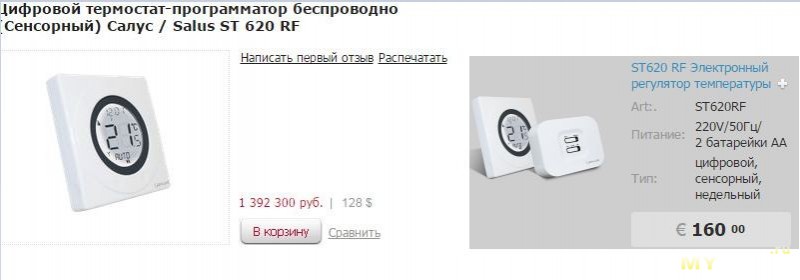
So what has arrived
Elegant “pimply” from the best English manufacturers 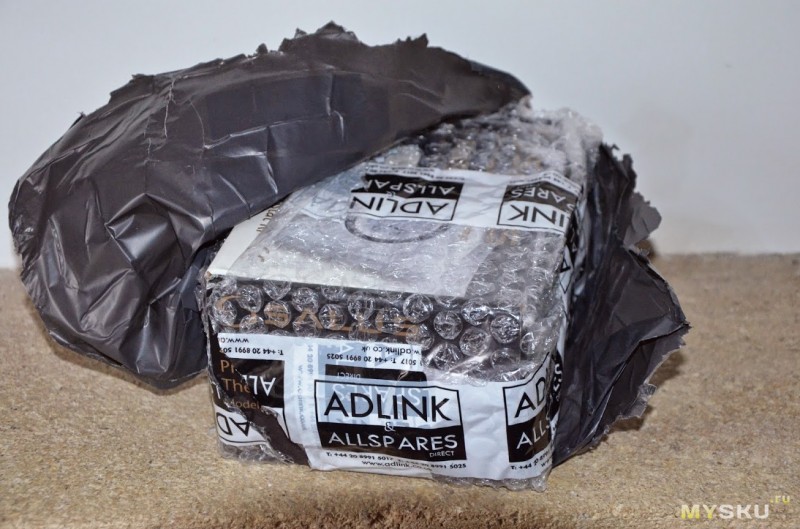
Slightly dented corners of a box made of fairly thick cardboard. 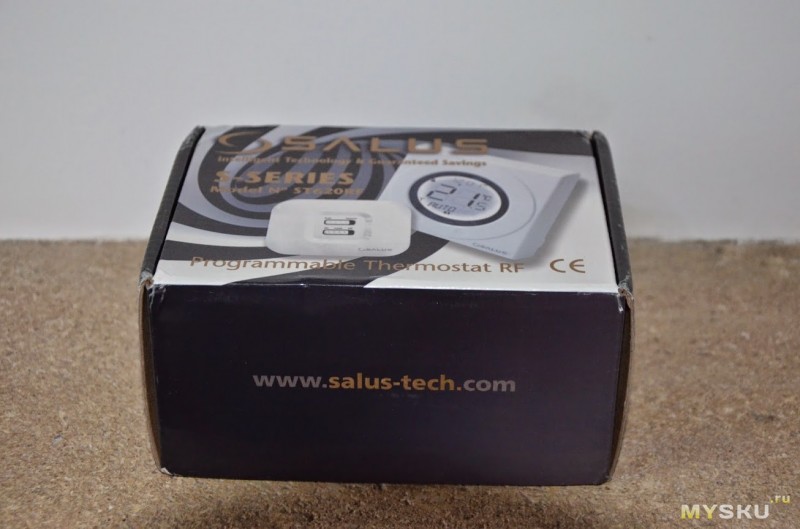
Everything inside is intact 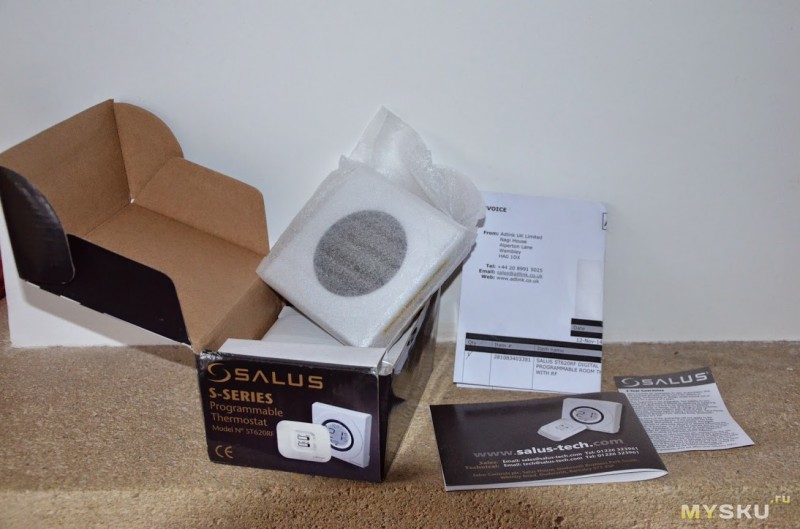
Description
- works on the “one touch” principle, control is carried out using the SENSOR RING, there is a touch ring locking function;
- The model has 6 factory programs + 3 individual settings programs; programming is carried out according to the principle of 5+2 days, day off, by day of the week, individually for each day of the week; 6 time/temperature settings per day;
- the model is designed to operate without voltage, potential-free relay type;
- controls the heating system by changing temperature and time;
- the option “freeze protection” is provided;
- LCD with backlight; The LCD displays settings: day, time, temperature value, menu, active program number, operating modes, battery charge;
- RCC – radio controlled clock – time and date are automatically updated every day, in accordance with the programmed settings;
- option for manually setting time, date, temperature;
- the model consists of a programmer and a receiver, which are connected to each other using an RF radio frequency signal; unique RF signal address codes
- operates at a frequency of 868 MHz, clear stable signal, FSC and MGC system guarantee the uniqueness of signal encoding
- the ST620RF model can operate in automatic, manual, and safe modes;
- Temperature environment: 0°C-45°C
- Temperature control range: 5°C -35°C
- Hysteresis: 0.5°C
- Voltage: 230V/50Hz/2AA batteries
- Max. switching current: 16 (5) A
- Protection level: IP=30
- Operating radio frequency: 868 MHz
- Maximum working distance: 100m (open space), 30m (indoors)
Dismemberment
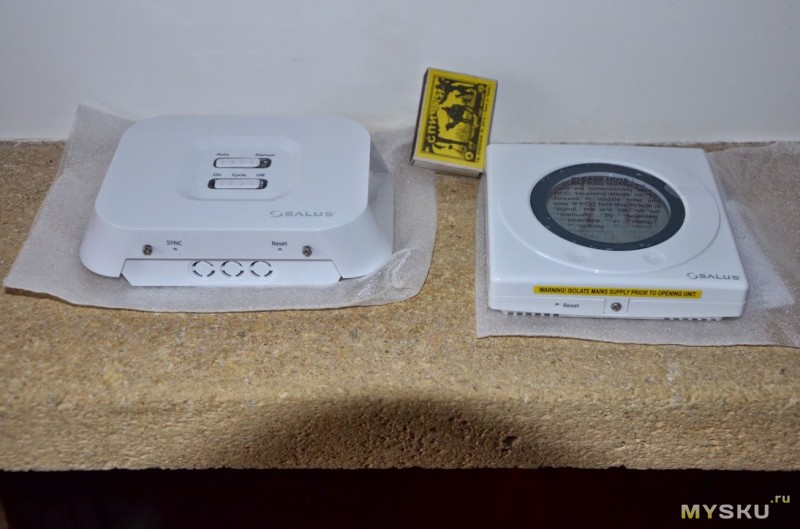
Receiver. It is connected directly to the boiler (diagram at the beginning) with wires. ![]()
Transmitter (aka programmer). Hangs in a heated room. It has on board a temperature sensor and an MSF 60 KHz module for adjusting Greenwich Mean Time (at the top, wrapped in copper wire). 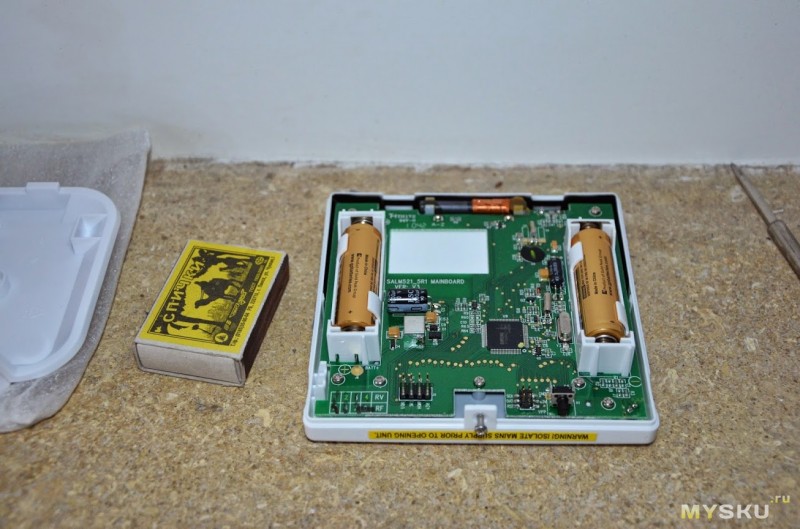
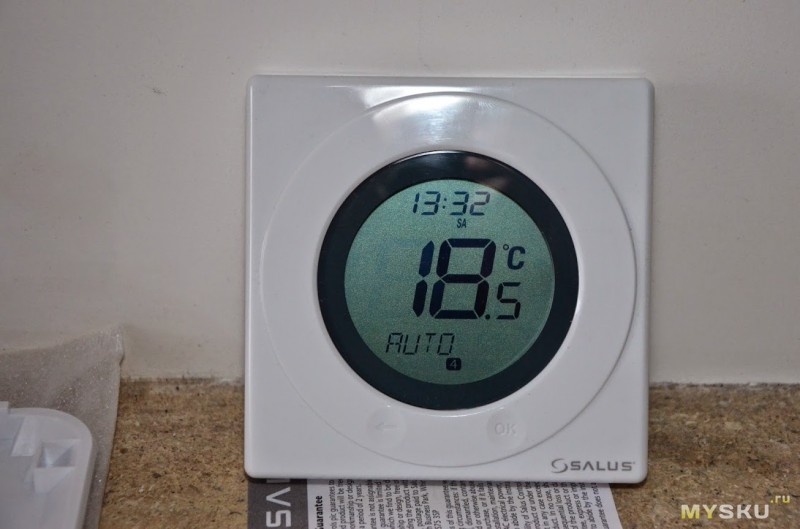
Backlight: 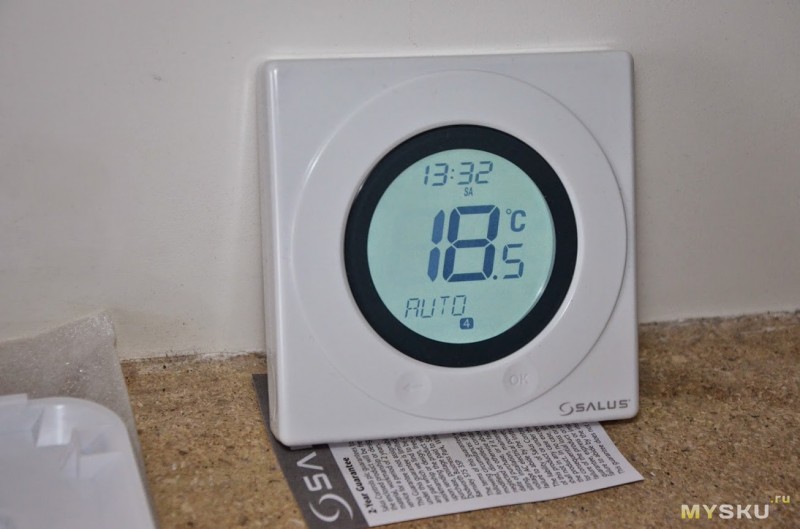
Installation work:
We remove the front panel of the boiler (I have Alfacalor made in Belarus, or rather honestly stolen from the Italians) 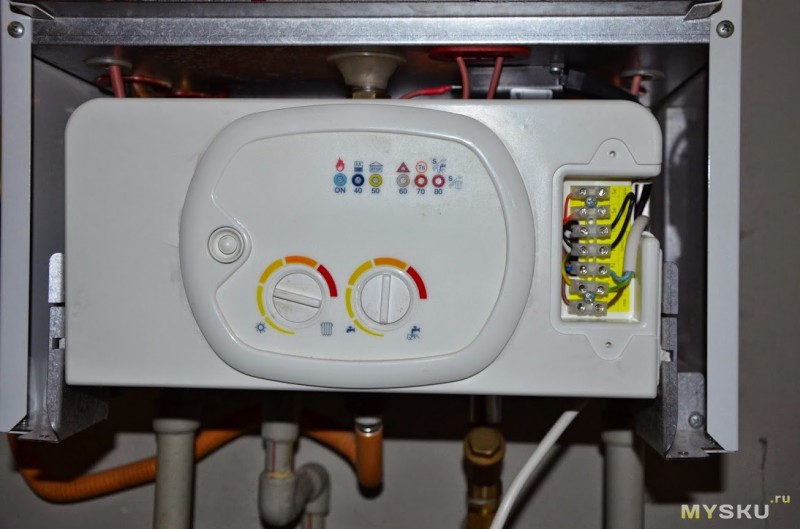
This black jumper allows the boiler to operate day and night, with periodic stops, heating the coolant to the set temperature. 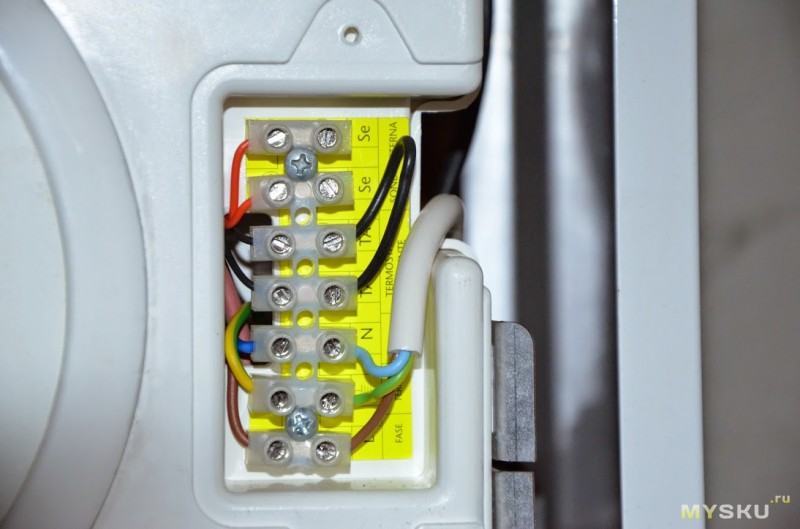
Instead, we connect a 2-wire cable, 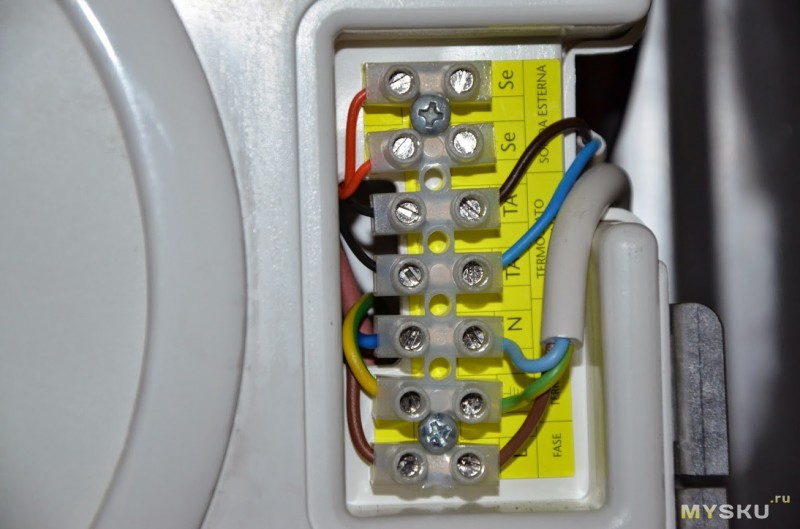
the second end of which is connected to the COM and NC contacts. We supply 220V and 0 to L and N, respectively. 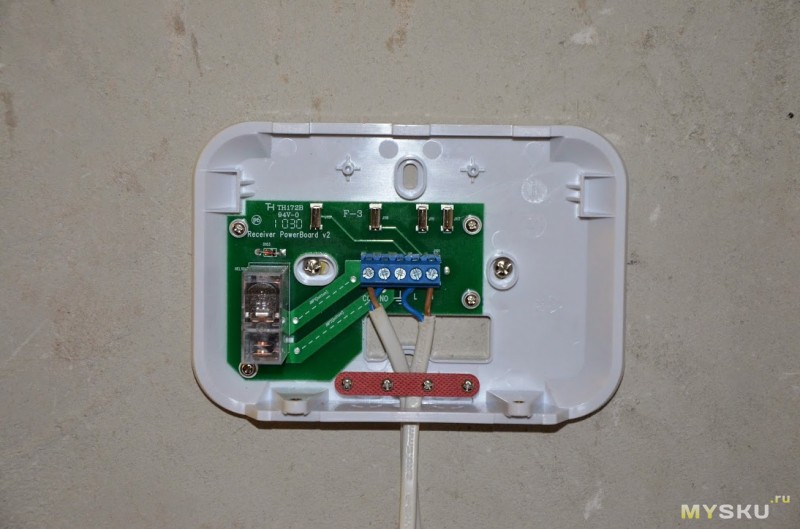
There are 2 switches on the front panel. Using the top one, you can set the “manual” mode if something happened to the transmitter (burned out, broke, ran out of batteries), and then the relay will operate in one of the three modes specified by the bottom switch: On (Normally Closed - the boiler “threshes” "continuously), Off (Nomally Open - the circuit is broken, the boiler does not work), Cycle (4 minutes “closed”, 11 minutes “open”).
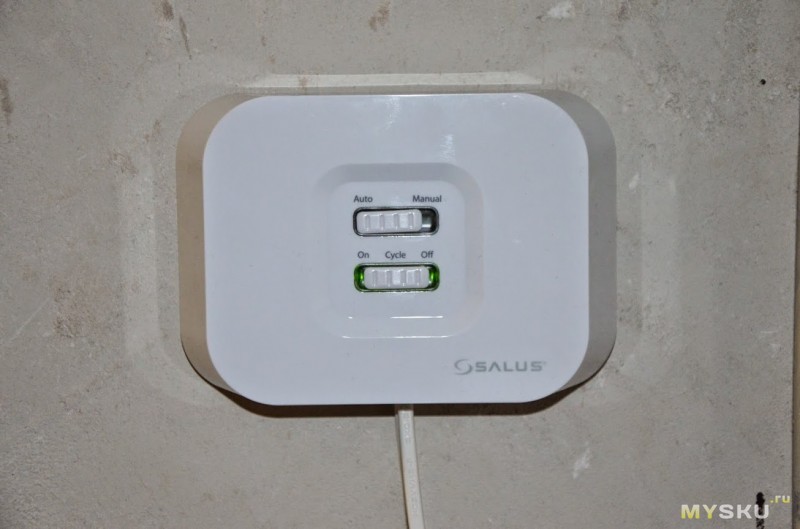
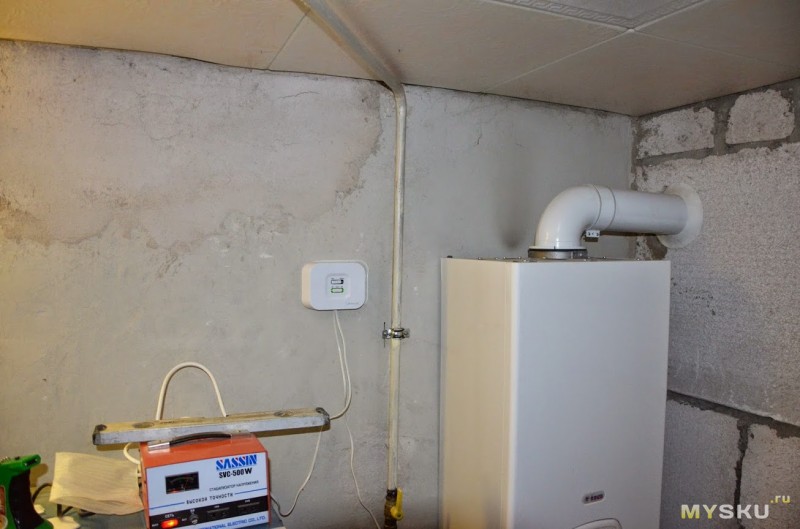
We return the front panel of the boiler to its place and turn the coolant temperature regulator so that it heats up to 75°C-80°C. 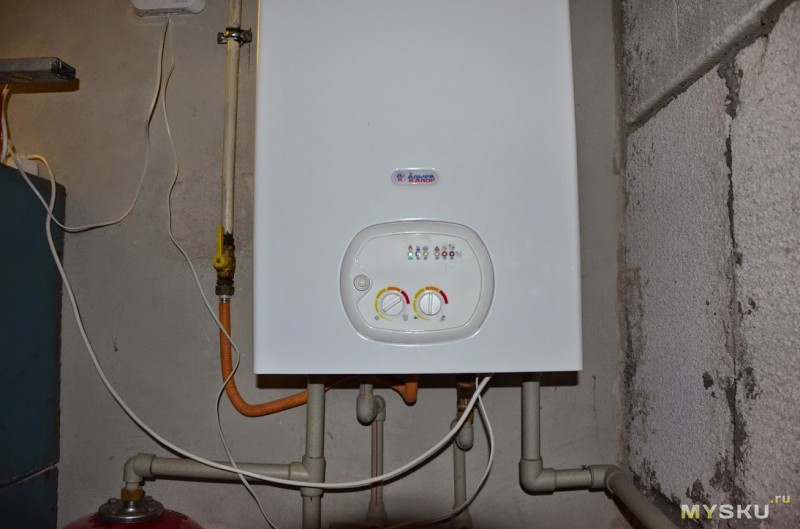
We press the SYNC button in the “receiver” with a paperclip, having previously selected the synchronization mode on the “transmitter”, and go hang the latter on the wall to make it look beautiful.
Interior. Aesthetics.
Hang it away from heating appliances, stoves, fireplaces, etc., which may affect the readings of the built-in temperature sensor. 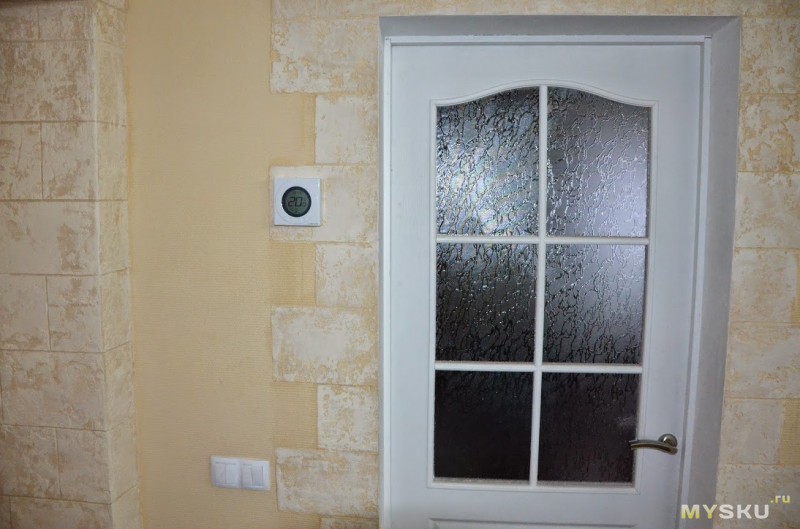
On the right is a child lock button if they can reach it. 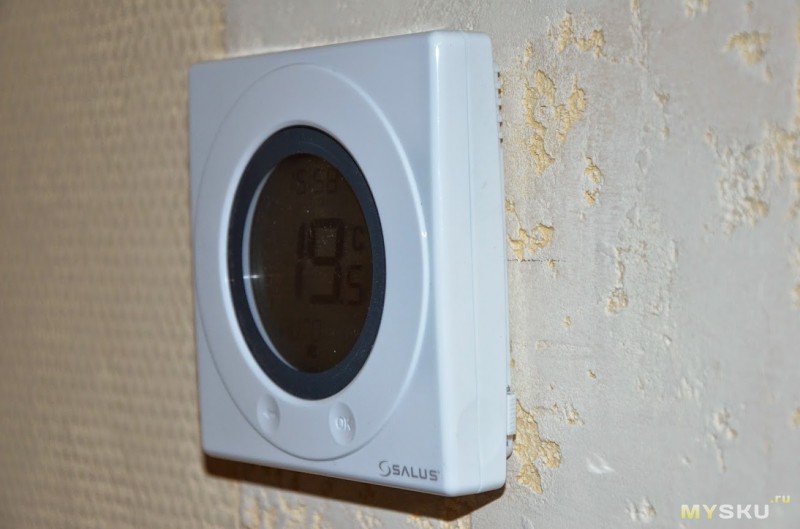
Principle of operation:
Modes:
1. 7 days (i.e. different settings for each day). For convenience, there is a function to copy settings for the next day
2. 5+2 (Mon-Fri, Sat-Sun)
6 programs (settings) for each, by default: 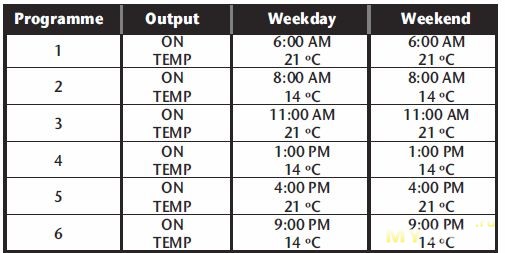
Those. at 6 am the thermostat commands the boiler to start heating the water to 75°C until the room temperature reaches 21°C, or 08:00 arrives (since the heating system is inert, it is not known which comes first).
At 08:00 the thermostat will “break” the circuit, the heating and pump will turn off, and turn on again at 11:00 and so on, 6 programs per day...
Since I have cast iron radiators, the heating rate of the room did not exceed 1°C, it cools down a little slower, I set the following mode - at night 17°C, in the morning 20°C, in the afternoon 17°C, in the evening 21°C. On weekends I shifted the time taking into account the fact that there are more people and drunk people sleep longer.
Peculiarity.
The settings have a PWM (pulse width modulation) mode. But this is for an electric heated floor, as I guess.
It was nice to know that this model has such a useful thing as time adjustment. It's like CASIO - waveceptor, Atomic clock in our opinion. Preliminary acquaintance and performance testing took place in the apartment of a panel house; the exact time signal was “caught” only at night, when the “transmitter/programmer” was lying on the windowsill. Time was synchronized according to Greenwich, i.e. the clock is 3 hours behind. No signal was received in the center of the room. “Here we go,” I thought, there’s no reception in the center of the room and there’s no need for it, why do I need Greenwich if I can’t set the time zone. But in a brick house, the exact time signal from the radio station was received everywhere - in the center of the rooms and even in the garage. There is nowhere to hide from him. Here you either need to remove the cross, disable this function, or put on your underpants and change the firmware.
But the support at salus-tech.co.uk brutally screwed me up - they kindly replied by e-mail that this function cannot be disabled and +3 hours is impossible to do.
I made a table based on the default one (see above), and simply added the “time -3” column and subtracted 3 hours for ease of programming.
There are simpler models
ST320RF - program for a day, i.e. every day the same thing.
ST620 - wired
ST620WBC - wireless, the receiver plugs into the native connector of BAXI boilers
Video of work (not mine)
Results:
"+" No need to drag wires and spoil the interior
"+" Touch control
"+" Time synchronization works up to 30° east longitude 50° north latitude. I liked the review
+43
+101
A room thermostat for a heating boiler is a device that has been on the market for several years. Every year these devices are only being improved, and today you can already find models that allow you to control the boiler without leaving your favorite sofa. Such devices are called wireless, which we will talk about in this article.
general information
A wireless room thermostat is a device that allows you to remotely regulate the temperature in a room. You can anywhere in the house you want. Moreover, you can install several such devices around the house that will communicate with each other and with the heating boiler.
Wireless room thermostats come in two types:
wired thermostat related
connected directly to the boiler
The first ones are like an addition to the main wired room thermostat. Such products are cheaper, but have a limited set of functions compared to products of the second type.
The second are more, which are connected directly to the boiler. They are usually produced by the boiler manufacturers themselves and are designed for specific models. Although there are also universal devices.
The operating principle of a wireless room thermostat is quite simple. The thermostat contains a radio transmitter that transmits a signal to a wired device or to the boiler where the radio is installed. Using the buttons on the wireless device, you set the desired temperature in the building. Your signal is transmitted to the boiler, which adjusts the draft damper accordingly to achieve the required heat output from the heating devices in the house, and thus you get the desired indoor climate.
Most popular models
Today, both in regular plumbing stores and on the Internet, you can find a great variety of models of wireless room thermostats. Below we will give examples of the most popular and high-quality ones, and also describe their technical features.
| No. | Model name | Technical features |
|---|---|---|
| 1. | TP5001A-RF | A wireless boiler temperature control device produced by the Danish company Danfoss. This system has a special control algorithm that allows you to set the most comfortable climate in the house through the least energy consumption. The product has a liquid crystal display. It is also equipped with a clock and calendar. It is possible to configure automatic on/off, increase/decrease heat heating system, including by day of the week. You can also connect a remote weather-sensitive sensor to the product. |
| 2. | SALUS Standard RT500RF | High-quality, modern, universal device. It is suitable for many types of boilers, both domestic and foreign. The RT500RF has a stylish appearance. It is equipped with a bright LCD display, a timer for adjusting the heat output of the boiler, incl. and by day of the week. The device has a stylish appearance. |
| 3. | Auraton 2030 RTH | Model 2030 RTH is produced by the world famous company Auraton. This is a real room heating programmer. This device allows you to configure up to 8 different temperature conditions per day, incl. on Saturday and Sunday. |
| 4. | EUROSTER 80TXRX | Can be used not only at home, but also in the office. It can regulate the climate in a separate room, directly influencing all the radiators that are located there. The advantage of this product is that it can affect individual heating devices without affecting the entire heating system. |
Each of the models presented above has its own advantages. There is nothing to say about the shortcomings here. The difference between these products is only in their quantity functionality, of which there are more, and cheaper models have correspondingly fewer.
Estimated cost
Let us note right away that most models of wireless room thermostats are more expensive than wired devices. This fact should not surprise you, since the former are more stylish and modern devices than the last ones. In addition, they will provide the inhabitants of the house with additional comfort, for which it is also not a sin to overpay a pretty penny.
Below we present to your attention the average cost of the above devices in Russian stores.
| No. | Model name | average cost in rubles |
|---|---|---|
| 1. | TP5001A-RF | 5 860,32 |
| 2. | SALUS Standard RT500RF | 4 080,65 |
| 3. | Auraton 2030 RTH | 4 583,33 |
| 4. | EUROSTER 80TXRX | 4 032,26 |
As you can see, the cost of one such device does not fall below 4 thousand rubles, which proves to us the fact that these devices are not cheap. However, their quality, as well as the comfort that they can give to the inhabitants of the house, are well worth paying such a price for them.
